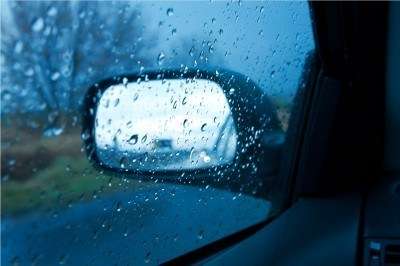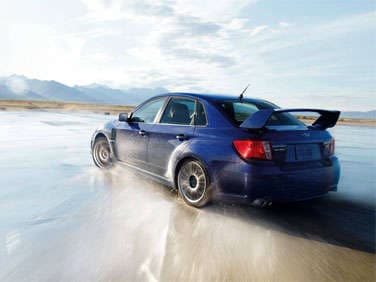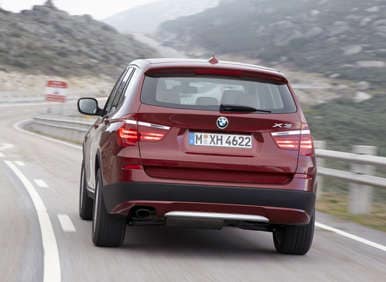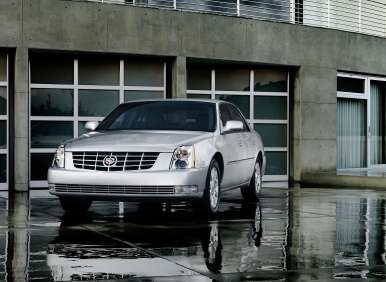Recent Articles
Popular Makes
Body Types
What Is Hydroplaning?

Picture it: You’re driving along the highway in a rain storm, you hit a puddle and suddenly the steering goes light, the car feels unresponsive to your inputs, and when you try to brake the car doesn’t slow. You my friend, are in the midst of a classic hydroplaning situation, and what you do next will determine whether you continue driving along on your way, wind up prey for a tow truck operator (at best), or become involved in a fatal collision (at worst).
Put simply, hydroplaning is what happens when water gets forced beneath the tires of your car and separates them from the road surface. When that happens, instead of enjoying the high co-efficient of friction your tires prefer, they are robbed of grip and go literally surfing across the water. With no traction, the tires do not perform their intended function of connecting your car to the road and consequently, a loss of control situation occurs.
So, how do you prevent hydroplaning?
What Is Hydroplaning? How To Prevent It
Preventing hydroplaning boils down to two very simple words…
Slow down.
Elevated speeds both increase the likelihood of hydroplaning and increase the severity of the phenomenon when it happens. The speed of your car has a direct effect on its tires’ ability to channel water away so they can remain in contact with the pavement. Another benefit of lower speeds; when traveling more slowly, less water builds up in front of the tire, which makes it less likely to “ride up on the wave and surf” so to speak.
As you might well imagine, a severely worn tire with hardly any tread is considerably more likely to hydroplane than a newer, well cared for tire with deep tread. The grooves in the tread pattern of the tires are what enable their rubber to cut through water and disperse it. This gives your tires the ability to cast liquid off to the sides, as well as channel it through and beneath them in order to help your car stay in contact with the pavement.
At this point, you’re probably starting to get the idea that the proper care of your tires has a lot to do with the prevention of hydroplaning. To that end, maintaining proper tire inflation pressure is a must as well. In addition to endowing your tires with the rigidity needed to respond well to steering and braking inputs, proper inflation of your tires keeps their tread systems operating at optimal efficiency. And, once again, it’s the tread of the tire cutting through the water that keeps your car on the ground. Thus, lower speeds and newer, well-maintained tires will significantly decrease (if not absolutely eliminate) the likelihood of hydroplaning.
There are a number of specific driving techniques and highway strategies you can employ to avoid hydroplaning as well.

What Is Hydroplaning? Preventive Driving Techniques
As we’ve mentioned throughout this article, the most effective technique you can employ to avoid hydroplaning is to slow your car down. The faster you go, the more likely you are to “surf” your tires. Avoiding standing water is another useful strategy as well. Deep puddles, particularly if you can’t see the ground through them, could present even a well-maintained tire with more water than it is designed to deal with, leading to an incident of hydroplaning.
Similarly, the middle lanes of the highway tend to stay drier than the outer lanes. Roadways are crowned in the middle in order to ensure water naturally drains to their edges. Because large trucks and heavier vehicles spend so much time in the far right lanes, grooves develop in them and water tends to pool in those outside lanes. Therefore, your best traction will generally be found in the middle lanes. Thus, fewer puddles—equal decreased potential for hydroplaning.
Another thing you can do is take advantage of the other cars on the road to enable you to drive in pre-dried pavement. Simply use the car ahead of you to dry a path on the street for you. If you drive in the tracks it leaves on the road surface after its tires have dispersed the standing water, you’ll be less likely to hydroplane. Standing water on the roadway will have already been cleared when you get there.
Use caution when doing this however. You want to stay close enough so their tracks are still dry when you get there, but you want to stay back far enough to avoid the impeded visibility their tire spray can cause. Also you want to leave yourself enough room to stop safely should the car in front of you suddenly brake.
Observing the five-second rule gives you the ability to accomplish both. While matching the speed of the car ahead of you, choose a fixed object up ahead of you on the side of the road. When the car in front of you passes it start counting; 1001, 1002, 1003, 1004, 1005. You should be driving past that fixed object when you get to 1005— if you have a five second buffer between you and the car ahead of you.
This will also help you avoid situations that could lead to a need to attempt sharp maneuvers. If you leave yourself a lot of room in traffic you can minimize braking.
Also, you should maintain direct control of the car rather than employing cruise control. With your foot on the throttle, when you sense hydroplaning beginning to occur, you can more readily do something about it.
Which brings us to what to do if it happens...

What Is Hydroplaning? What To Do If It Happens
As in any emergency situation, the first thing to do is to calm yourself. Panic will lead to poor decision-making, which could exacerbate the untoward circumstances. Suitably calmed, remove your foot from the gas pedal, but do NOT brake. If you hit the brakes you could induce a slide, and that could incite the car to go further out of control.
Remember, hydroplaning happens because the tires are not in contact with the pavement. This is why hitting the brakes will do little good—the tires have no grip. Without grip, they cannot stop the car.
So, to end a hydroplaning event, allow the car to slow of its on accord and the episode should end. If however, the hydroplaning incident does escalate into a skid, before responding, determine which way the rear end of your car is heading and steer in the opposite direction. If the car is skidding left, steer to the right. If the car is skidding right, steer to the left.
Counter steering in this fashion will straighten the car out, enabling you to regain control.
When counter steering, pay particular attention the movement of the rear end of the car, specifically, its angle. That way, when it straightens out, you can stop counter steering. Otherwise you could inadvertently induce a skid in the opposite direction.
If the skid (or slide) is at the front end of the car, your only recourse is to let off the throttle and wait for the front end to begin to respond to steering inputs again. Keep all movements gentle and measured. Overreacting can make a bad situation much, much worse.

What Is Hydroplaning? Conclusion
Any time you’re driving on a wet road, the potential for hydroplaning exists.
However, the first few hours of driving in the rain are actually the most dangerous—particularly if it is the first time it has rained in quite some time. As cars drive over the pavement, oils secrete from them, rubber wears off their tires, and the roads become polished and smooth. Add water to this mix, and suddenly you’ll have very slippery conditions.
Driving in the rain requires a considerable shift in the approach a driver takes to operating an automobile. To prevent the loss of control of your vehicle, the best strategy you can employ is to reduce your speed to give you more time to respond to emergency situations. Additionally, decreasing your speed increases the amount of traction available to your automobile.
So, that said, the best thing you can do to prevent hydroplaning (assuming your tires are in good condition and properly inflated) is slow your car down when the raindrops start to fall.
